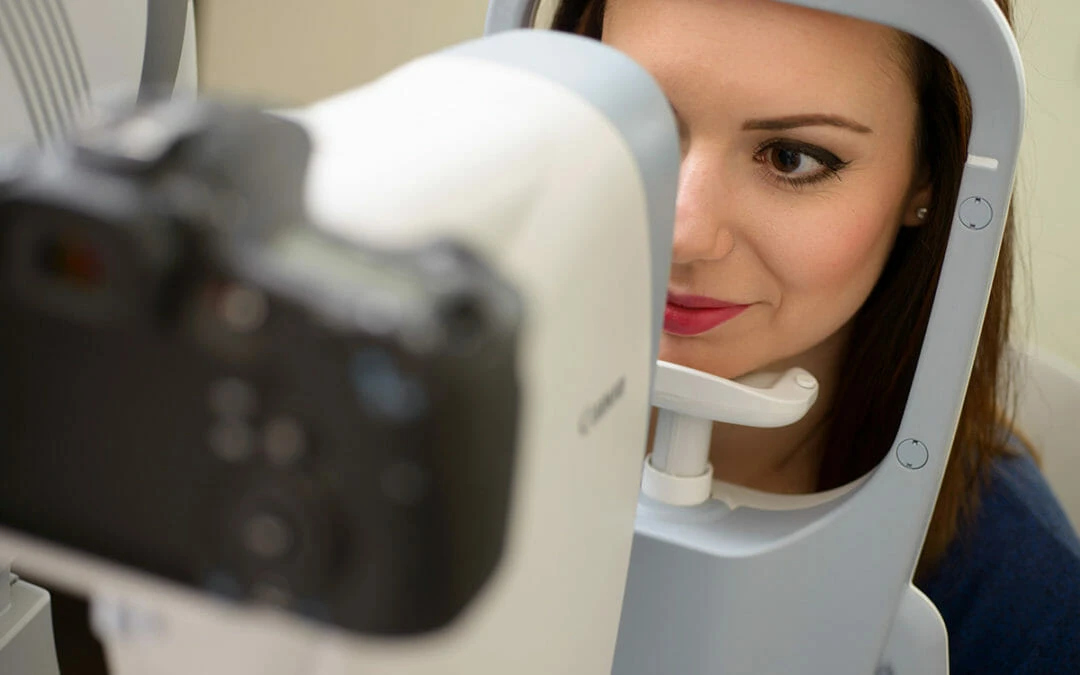What is chlamydial Infection?
Chlamydia is a sexually transmitted infection that may not present any noticeable symptoms.
Chlamydia is most common in the genital area, but it can affect eyes as well. When chlamydia affects the eye, conjunctivitis (pink eye) can result.
Conjunctivitis is an infection of the conjunctiva of the eye that is caused by the sexually transmitted disease called Chlamydia. Chlamydia, specifically Chlamydia trachomatis, is a human pathogen that is one of three bacterial species in the Chlamydial family.
Chlamydia is a sexually transmitted infection that may not present any noticeable symptoms.
What is chlamydia in eyes?
This condition is often referred to as chlamydial conjunctivitis (or inclusion conjunctivitis). Chlamydial Inclusion Conjunctivitis is an Eye Infection Caused by an STD. Chlamydia Inclusion Conjunctivitis is an infection of the conjunctiva of the eye that is caused by the sexually transmitted disease called Chlamydia.
Chlamydial conjunctivitis is redness and swelling of the clear membrane that lines the inside of your eyelids and covers the white of your eye. This membrane is called the conjunctiva. Chlamydia is a type of bacteria that can cause infections.
The adult inclusion conjunctivitis is caused by serotypes D-K. C. trachomatis is the most common cause of chronic follicular conjunctivitis and is also responsible for 20% of acute conjunctivitis cases
Symptoms of chlamydial conjunctivitis are eye inflammation caused by the bacteria causing the eye. This occurs when hand-to-eye contact is induced by a bacteria which causes the genital Chlamydia infection. Sexually active persons may have been infected with an infection. A woman can have infection of the sex gland in her eye by touching her hands and touching the genital tissue.
If you have conjunctivitis caused by chlamydia bacteria, eyedrops will not cure the infection. If you think that you are suffering from chlamydial conjunctivitis, you need to see your eye doctor. Chlamydia of the eye is treated with antibiotics which are taken by mouth.
Symptoms of chlamydia in eyes
Causes and symptoms of chlamydia in eye Inclusion conjunctivitis and trachoma is a bacterial eye infection that can cause swelling and itching. The bacteria that causes this infection is Chlamydia trachomatis. Chlamydia trachomatis is one of the leading causes of preventable blindness in developing countries.
An eye infection caused by chlamydia bacteria will cause the same symptoms as other bacterial eye infections. These include: redness discharge (is often present when waking up in the morning) a burning sensation.
The symptoms and signs of Chlamydia Conjunctivitis include a unilateral (only one eye) red eye, irritation, mucous discharge, swollen eyelids and crusting of the eyelids. Symptoms can start anywhere from 1 to 3 weeks after getting infected.
- redness in eyes.
- irritation.
- swollen eyelids.
- mucous discharge.
- tearing.- watery discharge
- photophobia.- light sensitivity.
- swollen lymph nodes around eyes.
Who gets chlamydia?
Chlamydia, specifically Chlamydia trachomatis is a human pathogen that is one of three bacterial species in the Chlamydial family. Chlamydia is most commonly seen in: People who have more than one sexual partner. People who don’t use condoms.
People with a history of STD’s, People under age 25.
Adult Chlamydial Conjunctivitis EPIDEMIOLOGY
Adult chlamydial conjunctivitis is a sexually transmitted disease (STD) All ages but particularly young adults More women than men affected C. trachomatis serotypes D-K
The leading causes of preventable blindness in developing countries. Chlamydia trachomatis can be spread through contact, either direct or indirect. At first, the infection may appear similar to the initial inflammatory symptoms of trachoma. However, it’s actually connected with the strains of chlamydia trachomatis that result in the genital infection.
Disease Transmission of chlamydia in eyes
Disease transmission occurs in fluid of an infected person. This can include: Semen or vaginal fluid of an infected person making direct contact with the eye.
Sharing items such as eye mascara or eye drops
Touching or rubbing your eyes after coming into contact with an infected person (this would need to be done quickly as the chlamydia trachomatis infection cannot survive for long outside the human body)
Chlamydia in eyes in newborns and babies
Pregnant women who have a chlamydial infection, get treatment for it before your baby is born.
Research shows 30 to 50 percent of infants whose mother has a chlamydial infection will contract neonatal conjunctivitis. The best way to prevent passing a chlamydial eye infection to your newborn is to ensure you’ve been treated for chlamydia prior to giving birth.
Pregnancy women carrying the virus may transmit this infection to the infant. The baby passes the vagina while delivering. Chlamydia may occur as soon as the child has reached the age of seven months with eyes red and eyelid swelling.
Chlamydial conjunctivitis can be treated with oral antibiotics. Untreated infants may develop lung infections, eye infections and even blindness.
Chlamydia in eyes in infants
Typically, the baby has symptoms from 1 week to 14 months. In most cases the symptoms of an amniotic sac rupture during pregnancy. Some infants also have a pseudomembrane. This membrane is an eye that is formed by inflammatory infections. This usually covers white eye areas.
What other STD’s can affect the eyes?
In addition to chlamydia, gonorrhea can cause conjunctivitis. Chlamydial conjunctivitis is typically seen within two to 19 days. The disease has many symptoms including the occurrence: but it does not normally produce pain.
Complications of chlamydia in eyes
One episode of trachoma caused by Chlamydia trachomatis is easily treated with early detection and use of antibiotics. Repeated or secondary infections can lead to complications, including: Scarring of the inner eyelid Eyelid deformities, such as an inward-folding eyelid (entropion) or ingrown eyelashes (trichiasis), which can scratch the cornea.
Chlamydia in eyes treatments
The infection is treated primarily with oral antibiotics such as azithromycin in very high dosage. The patient and their sexual partners should be evaluated by their primary care physicians for other sexually transmitted diseases and should be treated to prevent re-infection.
Speak with your doctor if you believe you’re experiencing a chlamydial eye infection. Treatment is generally effective in a relatively short time frame.
Chlamydia eye infections can often be treated with antibiotics like azithromycin or doxycycline. Doxycycline are first-line medications because they are safer. Tablet is commonly taken orally. This can be done without undergoing surgery, as it is not possible to diagnose chlamydia without having any symptoms or having any other medical condition.
When you start antibiotic therapy, your symptoms are treated. Many people had cleared the disease within two months.
Because adult chlamydial conjunctivitis is a sexually transmitted disease, co-infection needs to be considered. The most common co-infection is gonorrhea. A common practice is to administer single dose therapy for both chlamydia and gonorrhea infections. Sexual partners of the patients should be contacted, and they should be evaluated
Get Antibiotic Treatment for Chlamydia Now
Chlamydia occurs as a common sexually transmitted illness that occurs to all males and women.
The NHS estimates this is more common among people under 25.
Chlamydia develops in the absence of protected sexual activity or by contact with an infected seman. Chlamydia is a serious bacterial infection that can be transmitted without warning by the patient’s family.
However, you may experience discomfort while using the toilet and abnormal fluid in your stomach. Symptoms are different from those seen by men.
A two-to-three week regimen of erythromycin or tetracycline antibiotic ointment with systemic tetracycline, doxycycline or erythromycin is the usual treatment for adult chlamydial conjunctivitis.
How can I help prevent chlamydial conjunctivitis?
Wash your hands often. Do not touch or rub your eyes unless your hands are clean.
Never share eye makeup or cosmetics with anyone. When you have conjunctivitis, throw out all eye makeup you have been using.
Do not share towels, washcloths, pillows, or sheets with anyone.
Conclusion
Takeaway Chlamydial infections are commonly associated with the genitals as the infectious bacteria is typically passed from one person to another during unprotected sex.
Chlamydia trachomatis can also affect the eyes if the bacteria come in contact with them.
Keep your eyes healthy with TheraLife
References
Treatment of neonatal chlamydial conjunctivitis: A systematic review and meta-analysis. DOI: 10.1093/jpids/piy060
Conjunctivitis, chlamydial (adult inclusion conjunctivitis). (2020). https://www.college-optometrists.org/clinical-guidance/clinical-management-guidelines/conjunctivitis_chlamydial_adultinclusionconjunctiv





